Is Your Story Too Complicated? Here Are 9 Signs
 Calling a story “complex” is a high compliment. But what is complexity? How can we learn how to write stories that are complex—without skidding across that narrow dividing line into complicated? What’s the difference between a complex story and a complicated story? And is your story too complicated?
Calling a story “complex” is a high compliment. But what is complexity? How can we learn how to write stories that are complex—without skidding across that narrow dividing line into complicated? What’s the difference between a complex story and a complicated story? And is your story too complicated?
This a topic I’ve spent quite some time contemplating in recent years (not least because one of the major reasons my fantasy WIP went off the rails was my realization in revisions that it was just too complicated). A few weeks ago, in the post entitled “How to Structure Stories With Multiple Characters,” I mentioned in passing that:
One of the most powerful guidelines for any author is to “honor simplicity.” This doesn’t mean you can’t write stories of deep complexity, but it does mean you should never confuse complex with complicated.
This comment sparked a conversation in the comments of that post, in which Lila Diller asked:
Could you define more clearly what you mean about the difference between complex & complicated?
And so a post (or two posts, actually) was born. Today, I want to talk about several of the most common culprits for complicated stories. Next week, we’ll talk about how you can bring desired complexity into your work-in-progress.
What Is a Complicated Story?What’s the difference between “complex” and “complicated”? As I mentioned in my original response to Lila’s question, I like to think of “complex” as “many streams all leading to the sea.” Meanwhile, “complicated” is more akin to “many streams leading to many different seas.” Both are the result of “many parts,” but complexity brings unity to the overall whole by connecting more of those parts, while a complicated story is one in which those many parts don’t quite come together to create a single effect.
9 Examples of Complicated StoriesThere are many different ways, we can complicate our stories. Here are nine that come to my mind.
1. A Plot in Which the Structural Beats Are All About Different Things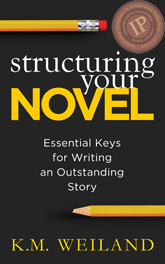
Structuring Your Novel (Amazon affiliate link)
Ideally, your story’s structural throughline (as revealed by its major structural beats) will show continuity. Even if your story is vast and sprawling with a large cast, the structural throughline should be cohesive and focused. You don’t want to see the First Plot Point focusing on the conflict with the antagonist, the Midpoint focusing on a relationship subplot, and the Third Plot Point veering away to put the spotlight on a supporting character.

Iron Man 3 offers an example of a story that over-complicates itself because its structural beats aren’t all focusing on the main plot. (Read more about that here.)
2. A Story Featuring Varied Themes That Don’t Support Each Other
Writing Your Story’s Theme (Amazon affiliate link)
Theme is often one of the most complex aspects of a story. It offers the opportunity to add layers of depth and interest to an exploration of any single topic. However, to create a unified effect, all the sub-themes should support a single overarching thematic principle.
The easiest way to identify your story’s primary thematic principle is to examine your protagonist’s character arc. Look at the thematic Lie and Truth he will be interacting with throughout the story and especially in the Climactic Moment.
You don’t want your supporting characters’ arcs to focus on unrelated themes. For example, complications are likely to arise if your protagonist’s story is about seeking justice, while your antagonist’s story is about dealing with a midlife crisis and the love interest’s focus is on getting out of debt.

The Last Jedi was scattered in its structural throughline and, as a result, lacked any cohesive thematic emergence from amongst its many subplots. (Read more about that here.)
3. A Setting That Is Scattered or UnfocusedAlthough not the most egregious offender, a scattered sense of setting can exacerbate the feeling that a story is complicated. A tight control of setting (with an eye on thematic intent) will benefit any story. Even in stories that intentionally cover a lot of ground, you’ll want a unifying factor—a pertinent reason why the characters are in these settings.
For example, setting-hopping stories such as those in the James Bond and Mission: Impossible franchises are, in fact, built around the idea of an international setting, which makes it all seem much less random than if, say, Elizabeth Bennett decided to take a quick vacation to Lisbon.
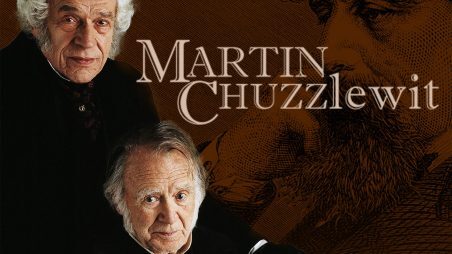
Martin Chuzzlewit offers a notorious example of a random and unnecessary setting, thanks to a lengthy section in which author Charles Dickens shoehorned his title character into a grueling tour of the United States.
4. A Story Featuring Too Many Characters Filling the Same Type of RoleOne of the easiest ways to complicate a story is by adding unnecessary characters. This is especially true when you have multiple characters performing essentially the same role in the story.
For instance, ask yourself how many friends does your protagonist have? If there are several, do they really all play a fundamentally different role within the story? Or are Friends #2 and #3 just adding noise (aka, complications)?
Particularly examine how many antagonists your story offers. Although multiple antagonists can, in fact, add complexity (as we’ll talk about next week), they can also unnecessarily complicate a story. Look at your Climax. The characters who are important in the Climax are the characters who are important to the story. This doesn’t mean you have to axe everyone else, but this understanding will give you an idea of which characters may, in fact, be extraneous.

Spider-Man 3 notoriously sunk itself under the complicating deadweight of three major antagonists, when it would have done much better to have given due diligence to just one.
5. A Character Who Is Trying to Form Goals Based on Too Many MotivationsWe want to write complex characters whose motivations are equally multifaceted. But when the protagonist’s reasons for wanting to kill the antagonist are based on the fact that the bad guy killed her boyfriend and on the fact that she had a bad experience with a serial killer when she was nine and on the fact that the antagonist reminds her the bully she hated in high school, it can all start feeling a bit convoluted and overdone.

I found the motivations of characters in the adaptation of The Witcher to be scattered and unconvincing. Yennefer in particular went from a motivation based on a tight and convincing backstory to having more motivations than I could count—all of which were primary motivations at different times.
6. A Magic System Influenced by Multiple MetaphorsThis one is, obviously, going to be pertinent only to speculative fiction such as sci-fi and fantasy, but it’s an important one. One thing most of the best fantasy stories have in common is a cohesive magic system. This doesn’t necessarily mean it has to be as high concept as, say, Brandon Sanderson’s Allomancy in Mistborn (in which different types of metal grant different types of magical powers). But particularly since you will have to explain the details of a magic system to readers, you don’t want to over-complicate its basic physics.
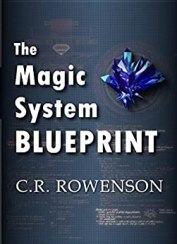
The Magic System Blueprint by C.R. Rowenson (affiliate link)
The late Blake Snyder called this “double mumbo jumbo.” Basically: if the main metaphor for your magic system is “weather,” you don’t want magic users also drawing power from runes or ghosts or some such. (C.R. Rowenson offers an excellent system for creating cohesive magic systems of all types in his book The Magic Blueprint System.)
7. A Story With “Tonal Whiplash”A story’s tone will set up much of your readers’ experience. If that tone jerks all over the place, it can quickly give them whiplash. This is a problem in its own right, but it can also make an already problematic story feel even more complicated. This isn’t to say a dark story can’t offer moments of tenderness or humor, or that a light story can’t occasionally break your heart. But the tone itself should remain consistent in telling readers what this story is about.
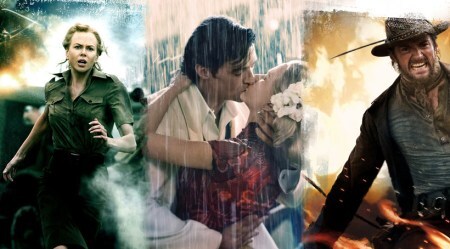
Baz Luhrman’s Australia opens as if it is a lighthearted romantic comedy, gets viewers settled into that, then takes several ninety degree turns into totally new tonal directions—which is not so much a cause as a symptom of its complicated plot. (Read more about that here.)
8. A Story With Disorganized POVsCommon sense tells us that the fewer POVs a story features, the less complicated it will be. And yet common sense also tells us that adding POVs (and even plotlines) can be a good way to add complexity.
So which is it?
It all depends on how the author manages those POVs. Random POVs (which can be caused by narratives that head-hop, narrators introduced late in the story, or narrators who are utilized for only a single scene) will often contribute to a more “ragged” feel for the overall narrative.
On the other hand, a controlled use of POV, in which narrators are carefully chosen not just for their viewpoint but for their thematic importance, and in which transitions are thoughtfully timed with respect to the overall structure and “shape” of the story, can create an organized feel in even the most complex stories.
9. A Story Featuring Plotlines or Characters Who Don’t Come Together in the EndFinally, we have what is probably the worst offender to the charge of a “complicated story.” Many of the above mentioned complications won’t necessarily sink a story all on their own. And audiences will often hold their patience until the end and forgive any loose ends if the finale satisfies them.
If, however, your story’s multiple plotlines and/or many characters do not all come together in the end in a way that feels satisfying, that’s a clear sign you were trying to juggle too many balls and couldn’t catch them all in the end. If you find that either you can’t tie off all your loose ends by the Climax and/or that the only way to do so is to cop to coincidences and contrivances, you’ll want to pull back and examine some of the previous points in this list to see where maybe you can trim out elements that aren’t contributing to the bottom line.
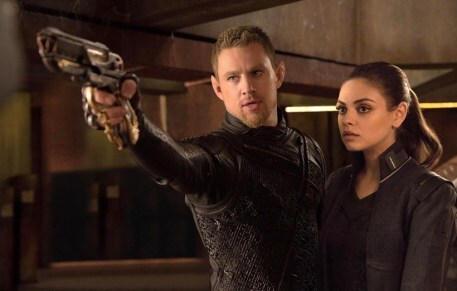
Jupiter Ascending was full of lots of interesting plotlines and teasers—almost none of which were pertinent to the ending or, in some cases. even explained. (Read more about that here.)
***
There are, of course, many other ways a story can complicate itself, but this list is a good place to start. The main difference between a story that is “complicated” and one that is “complex” is simply that the complicated story doesn’t work and the complex one does because it is able to bring all its pieces together into a seamless finale that makes sense.
Stay Tuned: Next week, we will look at how to successfully deepen your story with desirable complexity.
Wordplayers, tell me your opinions! Can you think of any more ways in which a story may complicate itself unnecessarily? Tell me in the comments!Click the “Play” button to Listen to Audio Version (or subscribe to the Helping Writers Become Authors podcast in Apple Podcast or Amazon Music).
___
Love Helping Writers Become Authors? You can now become a patron. (Huge thanks to those of you who are already part of my Patreon family!)The post Is Your Story Too Complicated? Here Are 9 Signs appeared first on Helping Writers Become Authors.




